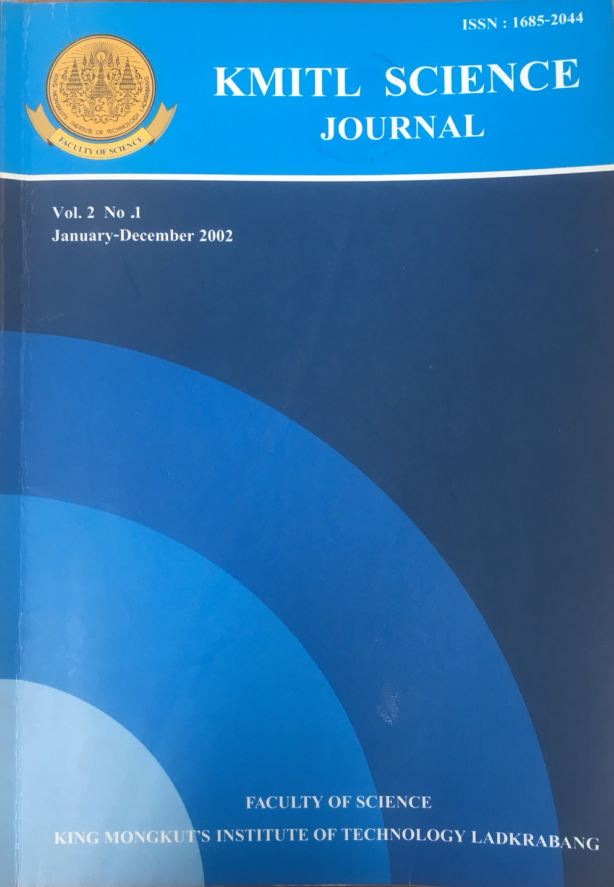Microenzymes
Main Article Content
Abstract
Several esterase enzymes, which are characterized by an unusually small molecular weight, have been isolated from both mesophiles (Candida lipolytica) and thermophiles (Bacillus stearothermophilus, Emericella nidulans and Talaromyces emersonnii). The Candida enzyme is 5.7 kDa, with 56 amino acid residues and the Bacillus enzyme is 1.57 kDa, with only 17 residues [1] and while both E. nidulans and T. emersonnii contained a 1.6 kDa esterase [2], Emericella also contained a 4.1 kDa enzyme.
In all cases the catalytic activity appears to depend on a bound metal ion, as shown by dialysis against chelating agents, ion replacement and inhibition by metal complexing agents. Specific activities are similar to reported esterase activities.
The Candida esterase has a temperature optimum of 28 oC, as might be expected from a mesophilic organism, but it has a half-life of 2 hours at 50 oC. The esterase from B. stearothermophilus is thermophilic, but whereas the optimum growth temperature is 55 oC the enzyme optimum is about 120 oC.
Both enzymes (C.lipolytica and B. stearothermophilus) exhibit some substrate specificity. The Bacillus enzyme has no specificity towards the chain length of the substrate, but shows activity towards the 2- position of triglycerides. The Candida enzyme shows both chain length specificity (optimum at butyl esters), as well as specificity towards the 1- position.
Keywords: -
*Corresponding author: E-mail: cast@kmitl.ac.th
Article Details
Copyright Transfer Statement
The copyright of this article is transferred to Current Applied Science and Technology journal with effect if and when the article is accepted for publication. The copyright transfer covers the exclusive right to reproduce and distribute the article, including reprints, translations, photographic reproductions, electronic form (offline, online) or any other reproductions of similar nature.
The author warrants that this contribution is original and that he/she has full power to make this grant. The author signs for and accepts responsibility for releasing this material on behalf of any and all co-authors.
Here is the link for download: Copyright transfer form.pdf
References
[2] X. Fan and M. Mattey, Biotech. Lett., 21, 1999, 1071-1076.
[3] R.U. Schenk, J. Bjorksten, Finska Kemists. Medd., 82, 1973, 26-46.
[4] R.C. Chandan and K.M. Shahani, J. Dairy Sci. 1963, 46, 275-283.
[5] S. H. Laxer, A. Pinsky, B. Bartoov, Biotech. Bioeng., 23, 1981, 2483-2492.
[6] D.B. Steel, M.J. Fiske, B.P. Steele, V.C. Kelley, Enz. Microb. Tech., 14(5), 1992, 358-360.
[7] W. Heinen, A.M. Lauwere, Proc. Int. Symp. Enzymes and Proteins from Thermophilic Microorganisms Zurich, 1975, 78-89 (Birkauser Verlag, Basel und Stuttgart)
[8] G. Adoga and M. Mattey, FEMS Microbiol. Lett., 6, 1979, 61-63.
[9] Y. Susuki, K. Oishi, H. Nakano and T. Nagayama, Appl. Microbiol. Biotechnol., 26, 1987, 546-551.
[10] Y. Susuki, Proc. Jpn. Acad. Ser. B., 65, 1977, 146-148.
[11] P.Y. Chou, G.D. Fasman, J.Mol. Biol., 115, 1977, 135-175.
[12] P.N. Lewis, F.A. Momany and H.A. Scheraga, Biochem. Biophysl. Acta, 303, 1973, 211-229.
[13] M. Levitt, Biochemistry, 17, 1978, 4277-4285.
[14] B.W. Mathews, H. Nicholson, W.J. Becktel, Proc. Natl. Acad. Sci USA, 84, 1987, 6663-6667.
[15] H.S. Tesfay, R.E. Amelunxen, I.D. Goldberg, Gene, 82, 1989, 237-248.
[16] U. Karst, H. Schutte, H. Baydoun and H. Tsai, J. Gen Microbiol., 135, 1989, 1305-1313.
[17] Y. Suzuki, K. Hatagaki and H. Oda, Appl. Microbiol. Biotechnol., 34, 1991, 707-714.
[18] M.P. Brosnan, C.T. Kelly and M.W. Forgaty, Eur. Biochem., 203, 1992, 225-231.
[19] G. Cacciapuoti, M. Porcelli, C. Bertoldo, M. Rosa and V. Zappia, J. Biol. Chem., 269, 1994, 24762-24769.
[20] M.H. Han, J. Theor. Biol., 35, 1972, 543-568.
[21] K. Krisch, In: The Enzymes, 3rd edition. P.D. Boyer (ed), Academic Press, London 5, 43-69.


